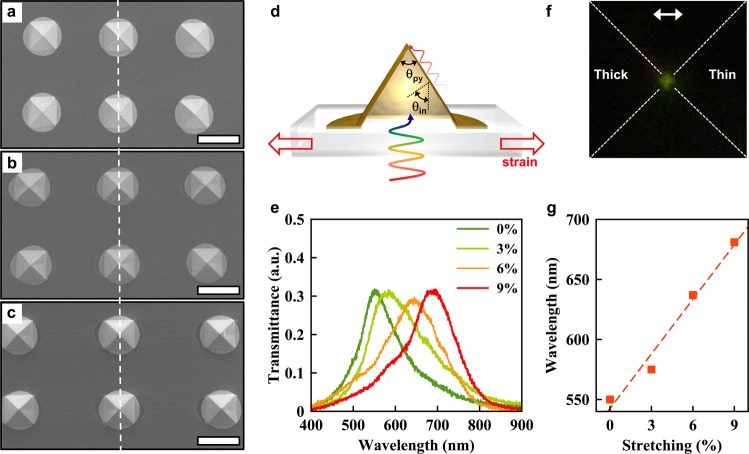Figure 3.
Tunable resonances of stretched metallic pyramids on PDMS. (a) The base width of the initial pyramid is 7 μm. (b) When the film is stretched to 10% past its initial length, the observed width increase of the pyramid’s base is about 5%. (c) When stretched to 20%, a 10% increase in the pyramid base width is observed. Scale bar: (a–c) 10 μm. (d) Cross-sectional schematic illustrating SPPs being generated on the thin Au face of the pyramid. (e) The measured spectra of scattered light at the pyramidal tip. As the applied force increases, the peak position of the spectra red-shifts from 545 to 682 nm. (f) CCD image of an asymmetric pyramidal tip that is internally illuminated with a white light source. The approximate position of the pyramidal tip is represented by dotted white lines. Green light (545 nm) is observed from the tip for no strain. (g) Spectral tuning of the light scattering at the tip by changing the incident angle via applied strain.

